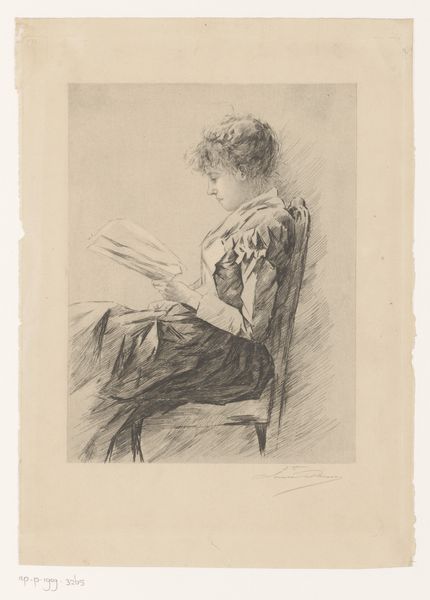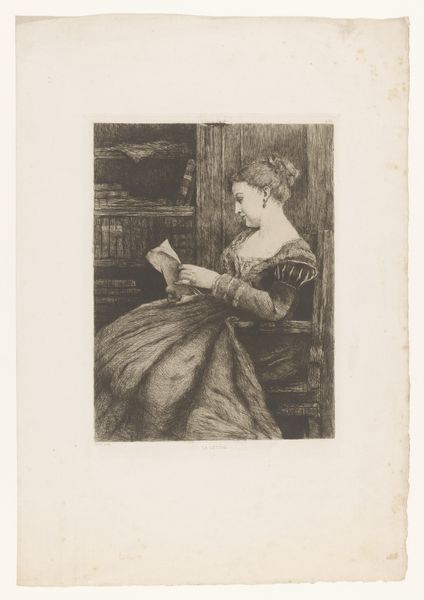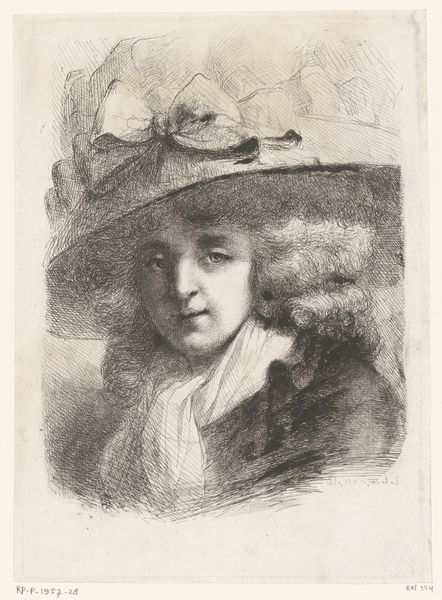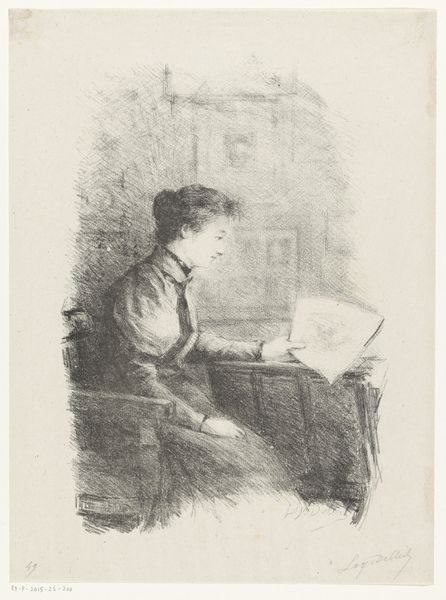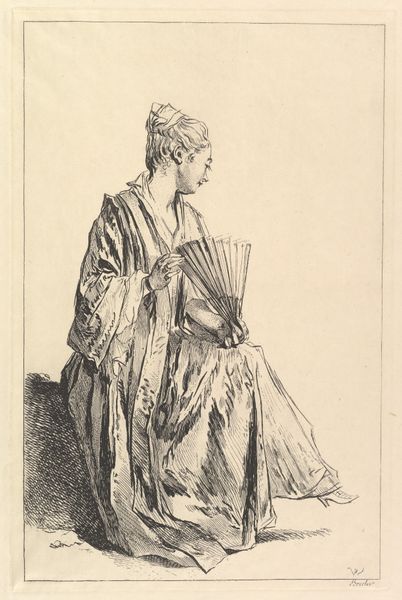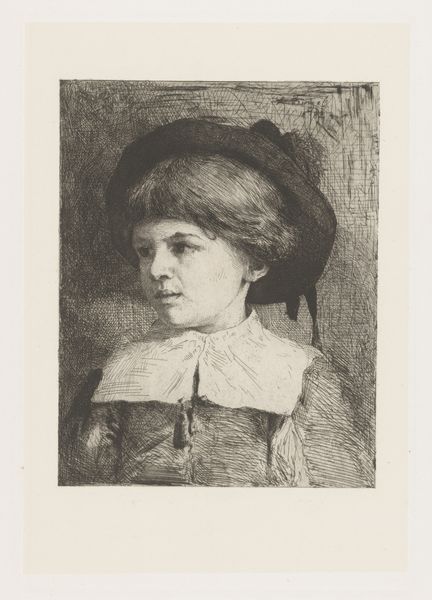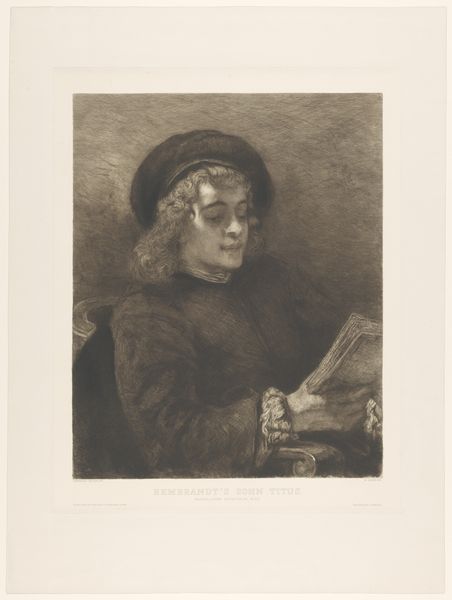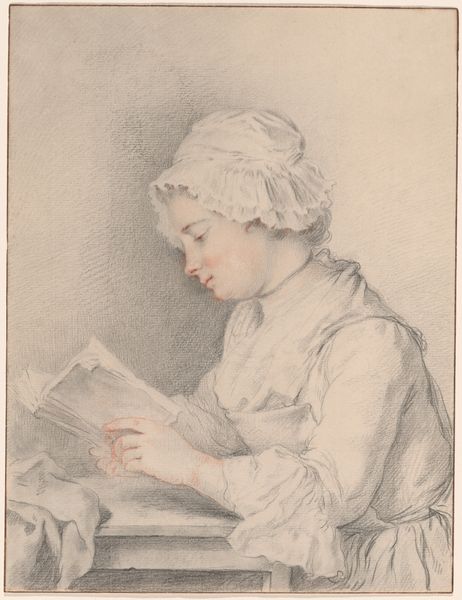
drawing, pencil
#
portrait
#
drawing
#
portrait reference
#
pencil drawing
#
pencil
#
portrait drawing
#
realism
Dimensions: height 318 mm, width 240 mm
Copyright: Rijks Museum: Open Domain
Therese Schwartze rendered this work, "Zittend Meisje," using etching techniques. Observe the girl's clasped hands; this gesture, seemingly simple, echoes through art history. Consider depictions of saints in prayer, or even Dürer's "Praying Hands." The act of folding one’s hands carries a weight of introspection, supplication, or quiet contemplation. The head covering she wears reminds us of similar head coverings in portraits of women throughout the ages, often suggesting modesty, domesticity, or a specific cultural or religious affiliation. Through time, the head covering has been both a symbol of protection and a marker of identity, shifting in meaning as cultures evolve. Here, in Schwartze's print, the girl's posture and the darkness surrounding her evokes a sense of melancholy and the introspective nature of youth. A powerful force engages viewers on a deep, subconscious level. This simple gesture and the darkness create a sense of isolation, engaging with our primal recognition of shadow and light, revealing vulnerability.
Comments
No comments
Be the first to comment and join the conversation on the ultimate creative platform.
